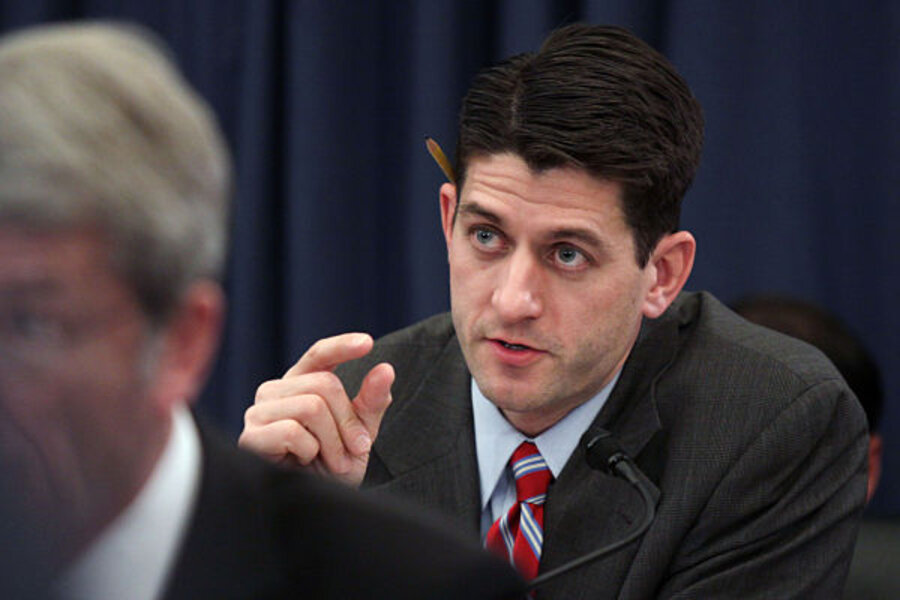Rep. Ryan’s tax roadmap: ambitious, but revenues fall short
Loading...
In his provocative Roadmap for America’s Future, Representative Paul Ryan (R-WI) figures that his broad tax code overhaul would eventually generate about 19 percent of Gross Domestic Product in revenues. But the Ryan plan would produce hundreds of billions of dollars-a-year less than that—about 16.8 percent of GDP—a decade from now, according to new Tax Policy Center estimates. Moreover, the plan would give a huge tax cut to the wealthy, while cutting taxes by little or nothing (and in some cases even raising taxes) for low- and middle-income people.
As a result, Ryan would likely fall far short of meeting his goal of balancing the budget and paying off the national debt by 2080, even if government spending were slashed to 1951 levels as he proposes.
Ryan’s plan is exceedingly ambitious. He’d remake Medicare, Medicaid, and Social Security and constrain future growth of nearly all other government programs. On the revenue side, he’d create an alternative tax system. Families and individuals could choose to continue to pay under the existing rules or select a two-rate structure that eliminates most current deductions and credits, repeals the Alternative Minimum Tax, and exempts all interest, dividends, and capital gains from the individual tax.
At the same time, Ryan would replace the corporate tax with a Business Consumption Tax, which is effectively a Value-Added Tax. Firms could expense all investment costs but could no longer deduct wages.
However, TPC found Ryan’s plan generates much less revenue than he projects. If all taxpayers chose the simplified system, it would produce about 16.8 percent of GDP by 2020, far below the 18.6 percent he figures for that year. If taxpayers chose the system most favorable to their situation, the Ryan plan would produce even less revenue—about 16.6 percent of GDP.
What does that mean in dollars? CBO’s most realistic projection of revenues (assuming most Bush tax cuts are extended and many middle-class families continue to be exempted from the Alternative Minimum Tax) figures the existing tax system would raise about $4.2 trillion in 2020. By contrast, Ryan’s plan would generate about $3.7 trillion, or $500 billion less in that year alone.
While TPC didn’t model the Ryan plan beyond 2020, the pattern of revenues it generates suggests it would be decades before it reaches his goal of 19 percent of GDP—very likely sometime after 2040.
Top-bracket taxpayers would overwhelmingly benefit from Ryan’s tax cuts. By 2014 people making in excess of $1 million-a-year would enjoy an average tax cut of more than $600,000. To put it another way, their after-tax income would rise by nearly 30 percent.
By contrast, the average taxpayer making $75,000 or less would pay higher taxes if they chose Ryan’s two-rate alternative. If they chose the tax plan more favorable to them, they’d do a bit better. For instance, people making between $50,000 and $75,000 would typically get a tax cut of $157 in 2014, while those making between $40,000 and $50,000 would pay $128 more on average.
These estimates are subject to lots of uncertainty. For instance, we assumed Ryan’s 8.5 percent VAT—the new business tax—would generate about 4.3 percent of GDP in revenues. TPC’s Joe Rosenberg, who modeled the Ryan plan, believes that estimate is generous. But since no such tax currently exists, it is hard to know for sure.
One other caveat: TPC did not assume that taxpayers would change their behavior in response to this new tax structure. We know they would, of course, in some ways that would generate additional revenue and in others that would lose revenue. But because these changes are so uncertain, TPC did not include them in our revenue estimates.
As I’ve written before, Ryan deserves kudos for highlighting the nation’s fiscal challenges and putting out a real deficit reduction plan. But it is hard to see how this one adds up.
Add/view comments on this post.
--------------------------
The Christian Science Monitor has assembled a diverse group of the best economy-related bloggers out there. Our guest bloggers are not employed or directed by the Monitor and the views expressed are the bloggers' own, as is responsibility for the content of their blogs. To contact us about a blogger, click here. To add or view a comment on a guest blog, please go to the blogger's own site by clicking on the link above.





